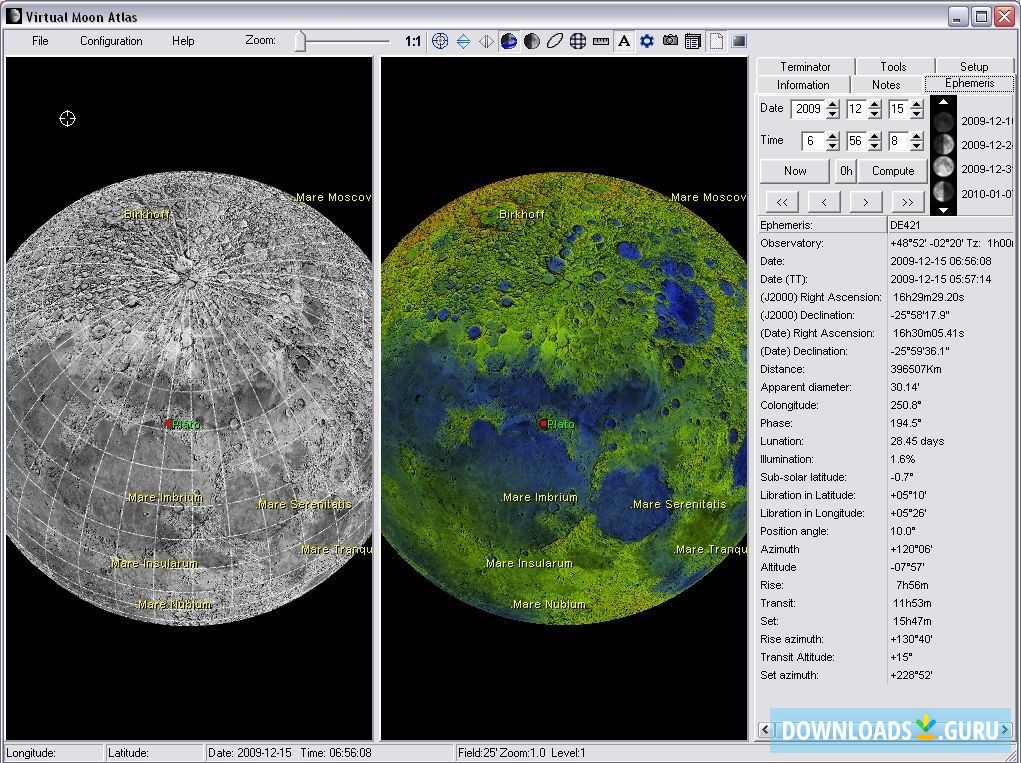
The captions combined with the images lift this book above the eye candy category and make it a reference worth owning.” (Thomas Watson, Cloudy Nights Telescope Reviews, January, 2012) … For people interested in learning to understand what they see on the Moon, this book would be a useful reference. “To the amateur astronomer with an interest in observing the Moon, the concept is an exciting one, and so the release of The Kaguya Lunar Atlas was greeted with enthusiasm by those with a love of moonlight. a book that will prove indispensable to any serious student of the Moon.” (Bill Leatherbarrow, The Observatory, Vol. The Kaguya images are spectacular, the authors have provided outstanding explanatory support ….


… provides a detailed overview of the mission and its scientific aims. … it does offer a valuable new resource to the armchair explorer of the Moon. … provide a dramatic astronaut’s-eye view that reveals familiar features in an unfamiliar and novel light. “Images that form the heart of the present volume. … the book depict one hundred image plates, each accompanied by a well written, detailed essay of the main features displayed.” (Paul Rumsby, Best Astronomy Books, September, 2011) The HDTV camera captured significant surface features, impact craters, maria, rilles, lava flows and geological faults in stunning detail.
#MOON ATLAS ONLINE FULL#
“SELENE, named after the Greek Moon Goddess but nicknamed Kaguya by the Japanese people after a mythical lunar princess, required a full year to image the lunar surface under optimal conditions. … this is strongly recommended as an excellent coffee-table book depicting the Moon at its Majestic best.” (Keith Cooper, Astronomy Now, September, 2011) … The earlier chapters also look back towards Earth, showing spectacular Earth rises, the phases of Earth and even the Earth eclipsing the Sun and creating a diamond ring effect. … The Atlas comprises 100 images of various lunar features, with detailed captions describing what we are seeing and how craters, rilles, pits, domes and mountains formed. Highly recommended.” (Steve Richards, Sky at Night Magazine, September, 2011) Many wonderful ‘face-on’ lunar images are taken from the Earth and orbiting spacecraft, but what makes the Kaguya images so special is that they are taken with a perspective identical to that of the Apollo astronauts. The collection is stunning in the amount of close detail it displays. “Launched on 14 September 2007, the Japanese lunar orbiter Kaguya carried various instruments including an HDTV camera, the images from which form the basis of this great book. I would whole-heartedly recommend the Kaguya Lunar Atlas to anyone who is an avid moon watcher, space fan, or would love to see the surface of an alien world as it truly looks, up close and personal.” (Astro Guyz, May, 2011) … Each image is expertly referenced against a Full Moon map for both nearside and farside …. “Kaguya Lunar Atlas to be a indispensable resource for quick identification of craters as well as a good a ‘common sense’ check as to what I’m seeing at the eyepiece. Charles Wood, an expert on lunar science and history, describes the pictures with text as informative as the images are beautiful. Motomaro Shirao was a member of the Kaguya HDTV team and selected the targets for imaging. Because of the unique perspective of the images each plate shows the surface in a manner that makes it visually appealing and scientifically understandable. The remarkable Kaguya/Selene HDTV images are used here to create a new type of lunar atlas. This is the view we all would wish to have, but are never likely to, except vicariously through the awe-inspiring Kaguya HDTV images. Thus, they show the Moon as it would be seen by an astronaut looking through a porthole window while orbiting only 100 km above the lunar surface.

What makes the images much more engaging than standard vertical-view lunar photographs is that they were taken looking obliquely along the flight path.
#MOON ATLAS ONLINE TV#
Sponsored by the Japanese NHK TV network, the HDTV has amazed both scientists and the public with its magnificent views of the lunar surface. But it also had the first high-definition television camera (HDTV) sent to the Moon. Like previous lunar orbiters, Kaguya carried scientific instruments to probe the Moon’s surface and interior. In late 2007 the Japan Aerospace Exploration Agency placed the Kaguya/Selene spacecraft in orbit around the Moon.


 0 kommentar(er)
0 kommentar(er)
